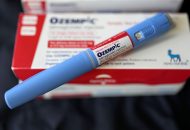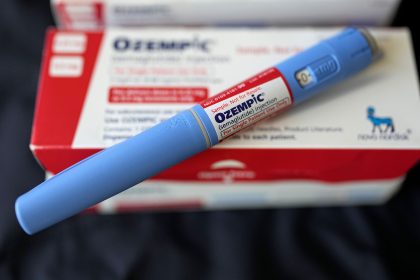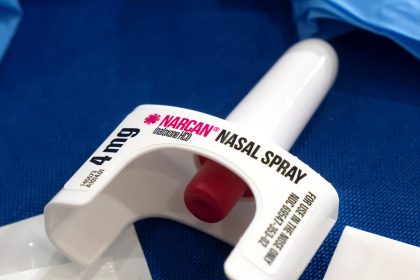Try Heat Therapy to Warm Up This Winter

WASHINGTON — As we near the end of February, have you gotten tired of being cold yet? While you wait for spring, heat therapy may be just what you need to warm up. If you’ve ever been to a sauna or steam room at a spa or gym, you’re familiar with sitting and relaxing in a hot room, but you may have wondered what exactly it’s doing for you.
We will explain what you need to know about heat therapy and break down the science and potential health benefits. Unable to get to a spa or gym to test it? We’ll also give you tips on how to create a therapeutic bath or shower at home.
What Heat Exposure Therapy Does
While you can find saunas in fancy facilities, heat exposure therapy isn’t new. For thousands of years, people have practiced “sauna bathing,” or sitting in a room at a high temperature with the intention of cleansing and healing. Sauna is a Finnish word, and other cultures have also practiced heat exposure throughout history.
When you expose yourself to a high temperature in a sauna or steam room, your body responds in much the same way as it would to moderate cardio exercise. Your body temperature rises, and you begin to sweat. Your heart rate and circulation increase. Your blood vessels relax and widen (vasodilation), increasing blood flow.
Heat exposure is a form of hormetic stress, or “good” stress, like exercise, which can make your body better at regulating temperature the more you do it. Your body also creates heat shock proteins, which can help decrease inflammation.
Sauna bathing is relaxing, but some research suggests it also may provide health benefits. Some studies suggest it could improve conditions like high blood pressure and cardiovascular diseases. Let’s break it down further.
Sauna Versus Steam Room
The two main types of heat exposure are saunas and steam rooms. The main difference is that saunas are dry, while steam rooms are wet. Many gyms have one or both because they may improve muscle recovery after exercise.
The Sauna
Sauna, a Finnish word, refers to a room with wood paneling and benches. Initially, they used a wood fire for heat, but today traditional saunas use an electric heater. The heater warms the air to 158 to 212 F, with 10 to 20% humidity, and you stay in it for five to 20 minutes.
An infrared sauna is another type of sauna that uses infrared light instead of a heater. The light creates heat that warms your skin directly instead of heating the air. Infrared saunas may feel more comfortable because they don’t feel as hot, but your body responds the same way. They’re typically 104 to 140 F, and you stay in for 15 to 30 minutes.
Potential Health Benefits:
- Cardiovascular Health: Studies are small and mixed, but research indicates sauna bathing may improve cardiovascular health because it relaxes blood vessels, increases blood flow, reduces inflammation and boosts the cardiorespiratory system.
- Health Conditions: Small studies also suggest that regular sauna bathing may help treat conditions including high blood pressure, heart failure, Alzheimer’s disease, type 2 diabetes and arthritis. One study suggests sauna use is linked with a lower risk of cardiovascular diseases and mortality.
- Muscle Recovery: Athletes and gym-goers often use the sauna after a workout. Increasing your blood flow and circulation and reducing inflammation after exercise may help reduce muscle soreness and improve recovery.
The Steam Room
Steam rooms, or Turkish baths, date back to the ancient Greeks and Romans. Unlike the dry sauna, it’s a wet room heated by steam from boiling water. Steam rooms are typically 110 to 120 F with 100% humidity. You may feel like you sweat sooner in a steam room than in a sauna, but it may be water droplets from the humidity.
There is less research on steam rooms than saunas, but since steam rooms are still a form of heat therapy, they may have similar cardiovascular and muscle recovery benefits.
Potential Health Benefits:
- May Reduce Congestion: Inhaling vapor and steam may help clear congestion in your sinuses and reduce mucus, similar to using a humidifier at home when you’re sick.
- Alleviates Stress: One study suggests that heat exposure therapy helps reduce stress for people with high-stress jobs. Heat exposure is “good” stress, which may help alleviate chronic stress.
- May Improve Skin Health: Anecdotal evidence suggests that spending time in the steam room can boost your skin health by sending more blood flow to the skin.
Heat Therapy at Home
Saunas and steam rooms may not be for everyone. It’s always best to check with your doctor if you have health conditions before trying them out. Some people can’t tolerate the heat, and others may not have access.
One of the main benefits of using a sauna or steam room is taking time to relax, breathe and practice a few minutes of mindfulness to reduce stress. You can do this at home on a cold winter night.
- Warm Bath: Set up a warm bath to relax your muscles and breathe deeply.
- Eucalyptus Shower: Hang fresh eucalyptus in your shower. The steam from the hot water releases eucalyptus oil which may decrease anxiety and congestion.
Warm Your Winter Days
Warm your body in a sauna, steam room, or a hot bath or shower at home. Research suggests heat therapy may improve cardiovascular health and reduce muscle soreness, but studies have been small. Regardless, heat exposure therapy is an ancient tradition that is thought to be safe and can increase well-being.
You can reach us at [email protected] and follow us on Facebook and X (formerly known as Twitter)

























